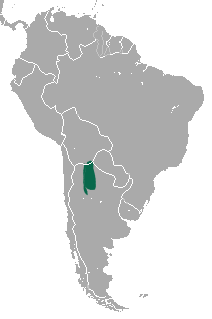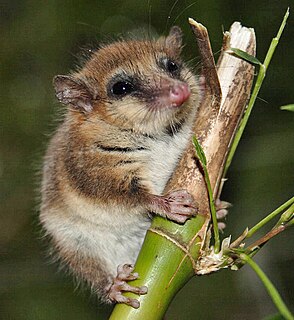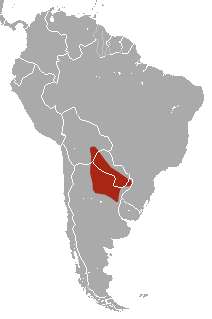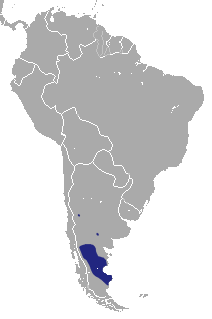 W
WThe Argentine fat-tailed mouse opossum was formerly considered a species opossum in the family Didelphidae. It is found in the eastern foothills of the Andes in northern Argentina and southern Bolivia. Its dorsal fur is gray brown to dark brown. Its ventral fur is gray-based except for the white to yellowish chest hairs. It has been distinguished from T. cinderella by its postorbital ridges. T. cinderella has well-developed postorbital ridges in both juveniles and adults that extend laterally behind the eye sockets. Only adults of T. sponsorius have fully developed postorbital ridges, and these do not extend laterally behind the eye sockets. However, mitochondrial DNA sequence analysis does not support the population being distinct from T. cinderella.
 W
WThe buff-bellied fat-tailed mouse opossum is a species of opossum in the family Didelphidae. It is found in the transitional and humid forests of northern Argentina and southern Bolivia. Its dorsal fur is cinnamon brown. Most of its ventral fur is gray-based, but its chest, throat, and the thoracic midline are not gray-based. The postorbital ridges are absent in the young and weakly developed in adults. There are four synonyms: Marmosa elegans venusta, Marmosa elegans cinderella, Marmosa elegans sponsoria and Marmosa janetta with cinderella and sponsoria actually being one taxon and a subspecies of venustus; janetta is the largest of all and has cream-white ventral pelage with plumbeous bases.
 W
WThe chacoan gracile opossum is a species of opossum in the family Didelphidae. It is native to Argentina, Brazil and Paraguay. Its habitat is seasonally flooded grasslands and forests in and near the Gran Chaco.
 W
WThe Chacoan pygmy opossum is a recently described genus and species of didelphimorph marsupial. The only species in Chacodelphys, C. formosa, was known until 2004 from only one specimen collected in 1920 in the Chaco of Formosa Province, Argentina. The species is gaining popularity as a pocket pet.
 W
WThe long-nosed caenolestid, also known as the Chilean shrew opossum or long-nosed shrew opossum, is a shrew opossum that occurs in temperate forests of Argentina and southern Chile. It was first described by American zoologist Wilfred Hudson Osgood in 1924. The long-nosed caenolestid resembles Caenolestes species in morphology. It is characterized by a long, pointed snout, small eyes and ears, and one claw on a digit of each of the thin limbs. Little is known of its behavior; it appears to be terrestrial, nocturnal and omnivorous. It prefers cool, moist areas, and has a small distribution. It is classified as near threatened by the IUCN.
 W
WThe monito del monte or colocolo opossum, Dromiciops gliroides, also called chumaihuén in Mapudungun, is a diminutive marsupial native only to southwestern South America. It is the only extant species in the ancient order Microbiotheria, and the sole New World representative of the superorder Australidelphia. The species is nocturnal and arboreal, and lives in thickets of South American mountain bamboo in the Valdivian temperate rain forests of the southern Andes, aided by its partially prehensile tail. It eats primarily insects and other small invertebrates, supplemented with fruit.
 W
WThe white-bellied woolly mouse opossum is a small pouchless marsupial of the family Didelphidae. It was formerly assigned to the genus Micoureus, which was made a subgenus of Marmosa in 2009. The specific epithet was given in honour of Constance Sladen, wife of the naturalist Percy Sladen. She funded the 1902 expedition which collected the type specimen.
 W
WThe common fat-tailed mouse opossum is a species of opossum in the family Didelphidae. It occurs in Argentina, Bolivia, Brazil, and Paraguay in chaco and Andean foothill habitats. Its head-and-body length is about 75 to 120 mm, and its tail length is about 90 to 134 mm. Its dorsal fur is brownish gray, and its ventral fur is yellowish to white. The legs and cheeks are the same color as the ventral surface. Its tail is sharply bicolored. A ring of faintly darker fur surrounds each eye. Its tail often lacks fat deposits, but does not always.
 W
WThe Patagonian opossum (Lestodelphys halli) is the sole species in genus Lestodelphys.